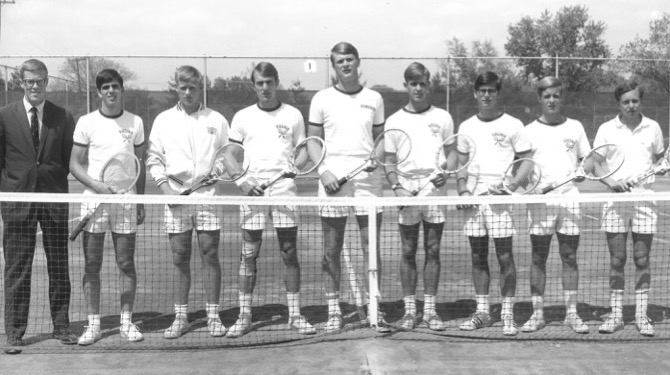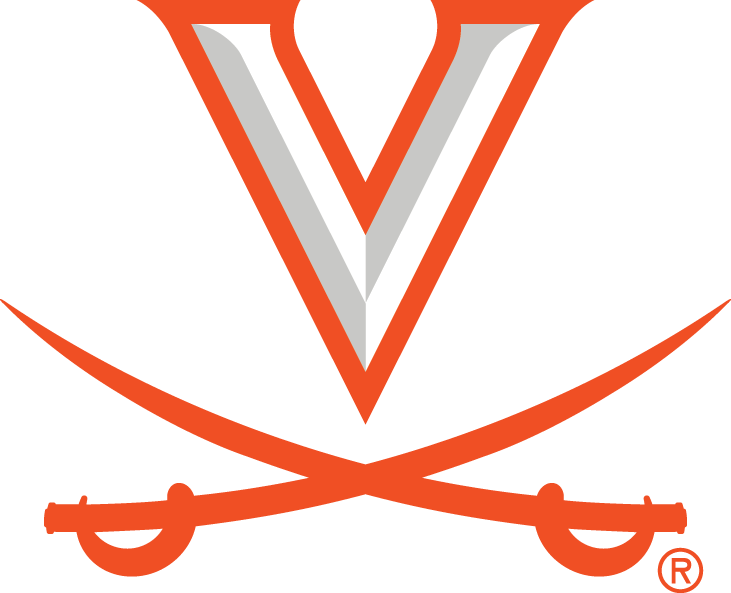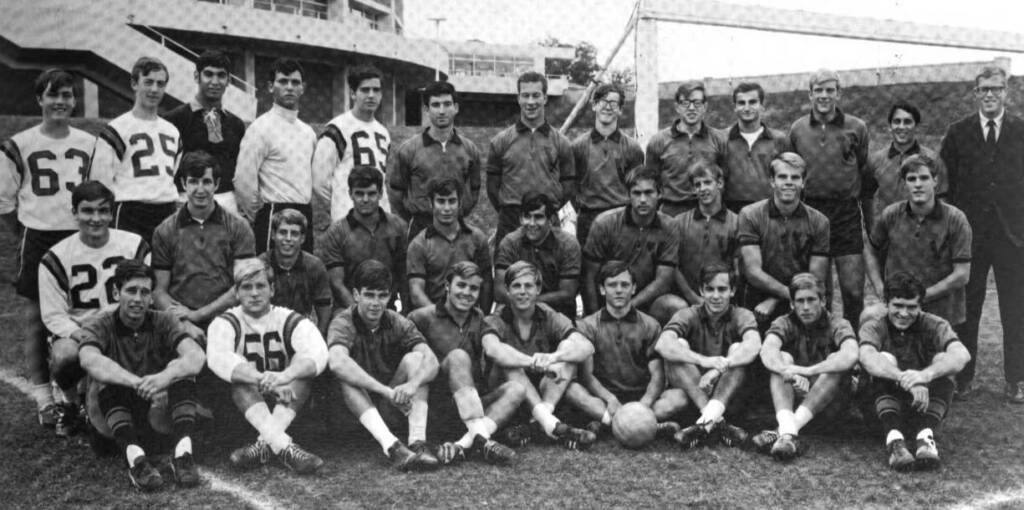By Jeff White (jwhite@virginia.edu)
VirginiaSports.com
CHARLOTTESVILLE — One of the first people Andres Pedroso met at the University of Virginia was a legendary figure on Grounds. It was 2010, and Pedroso had just joined the staff of head men’s tennis coach Brian Boland.
“Brian took me straight to Madison Hall and brought me into Gordon’s office,” Pedroso recalled this week.
Gordon Burris was, and still is, a good person for anyone associated with the University to know. In 2010, he was a special assistant to UVA’s president—first John Casteen and then Teresa Sullivan that year—but that was only one of the many positions he held in the nearly 50 years he worked on Grounds.
At various times Burris also served as head men’s soccer coach, head men’s golf coach, head men’s tennis coach, volunteer assistant coach in track & field, assistant dean of admissions, assistant director of the Alumni Association, and director of development for major gifts in the athletics department.
“He’s a total legend,” Pedroso, now the Cavaliers’ director of tennis and head coach of the men’s program. “He’s the epitome of UVA. He represents everything that’s right about our university.”
Burris’ contributions to UVA tennis will be recognized this weekend at the Boar’s Head Resort, where the men’s and women’s programs are based. The newest court at the Virginia Tennis Facility, which opened last year, will be dedicated Saturday. It carries Burris’ name.
“I’m just so proud of where the program has gone, and to be a part of it,” said Burris, who officially retired in 2012 but has continued to assist the University on several fronts.
“What he’s done for UVA and the relationships he’s built with so many people that are a part of this program mean a lot to us, so we’re thrilled we’re able to do this in his honor,” head women’s coach Sara O’Leary said. “We’re really excited about Saturday, and really grateful to have him in our lives.”
Pedroso said: “He’s part of the family, for sure.”

Burris, who grew up in Wilmington, Del., came to UVA in 1965 after earning a bachelor’s degree from Springfield College in Massachusetts. After enrolling in a master’s program in the Curry School of Education, Burris recalled this week, “I was trying to make a little money on the side, so I went over to see James O. West.”
West was then Virginia’s head baseball coach and director of its physical education program.
“I said, ‘Hey, Coach, I’m out of Springfield College, here’s my degree. Is there anything I can do to help you guys here? I’m willing to volunteer my time,’ ” Burris recalled. “He said, ‘There’s a lot you can do, and I’ll even pay you to do it. Why don’t you teach a full load of phys ed classes?’ ”
Before the University went coed in the 1970s, Burris said, first-year students were required to take PE classes. They were taught by the coaches of the varsity teams, as well as the athletic director.
After his conversation with West, Burris said, he met Lou Onesty, head coach of UVA’s track & field team, “and I fell in love with the guy right away. I said, ‘Coach, I see you out there coaching hard, and when track season comes around, could I be your volunteer assistant?’ He said, ‘Are you kidding me? No one’s ever offered to be a volunteer assistant.’ I said, ‘Well, I would love to do that.’ He said, ‘You’re on. You’re coaching throwers and jumpers.’ ”
And so began Burris’ coaching career. He succeeded Gene Corrigan as head coach of the men’s soccer team after the 1965 season and held that post for five years. Burris had two stints as head coach of the men’s tennis team. He oversaw the program in 1967, ’68, ’69, ’70 and ’71 and again in ’75. Back then, the Cavaliers practiced and played home matches on the courts next to Memorial Gymnasium.
In 1972, ’73 and ’74, Burris coached the men’s golf team. His standouts included Tom McKnight, who’s now in the Virginia Golf Hall of Fame and remains one of Burris’ close friends.
“Someone said to Tom one time, ‘Hey, Tom, what was it like playing on a golf team where the coach couldn’t break 100?’ ” Burris said, laughing.
Those were different times in college athletics. Student-athletes in sports other than football and men’s basketball were not on scholarship at UVA, and budgets were tight.
“When you tried out for the men’s tennis team, you had to bring your own tennis balls,” said Burris, who earned his master’s degree in physical education in 1967. “UVA couldn’t provide tennis balls. You had to bring your own tennis balls, you had to bring your own racket, and if you made the team, you got to hit some UVA tennis balls, at least for the matches. Also, you had to string your own racket. You had to go down to Red Rohmann’s sports shop [on the Corner] and get your racket strung, or string your own, because we had no money in the budget to do that.”
Burris remembers approaching one of the athletics department’s leaders, Evan “Bus” Male, about taking the tennis team on a trip for spring break.
“He said, ‘What are you going to pay for it with?’ I said, ‘I don’t know. The kids tell me they want to go on a spring trip.’ Coach Male said, ‘Good. Tell the kids they can pay for it.’ So we did. The kids paid for it, and I paid my own way.”

